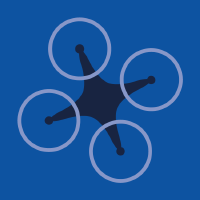Topic Editors







Innovation and Inventions in Aerospace and UAV Applications
Topic Information
Dear Colleagues,
As the Editors of the Topic “Innovation and Inventions in Aerospace and UAV Applications”, we would like to invite you to submit a paper to this collection. Recently, we have been experiencing a tremendous growth in the development of unmanned aerial vehicles (UAVs) and aerospace issues. Each month brings new ideas related to aviation in its broadest sense, becoming an even stronger accelerator for research in this field. This Topic aims to contribute to the innovative development of manned and unmanned aviation in many areas. Special consideration will be given to high-quality papers that address significant and inventive advances in design, modelling and control, as well as novel approaches and applications.
Potential topics include, but are not limited to, the following:
- innovative UAV design;
- new design approaches in aerospace and UAV;
- unconventional airframe configuration;
- new applications for UASs;
- additive manufacuring in aviation;
- new materials in aviation;
- lattice and light-weight structures;
- hybrid propulsion systems;
- efficiency of flying platform;
- green propulsion in aviation;
- collaboration between manned and unmanned aircrafts;
- navigation in aviation;
- new machine learning techniques for UAS/aviation autonomous control;
- dynamics, control and simulation of flying platforms;
- embedded systems design for UAVs;
- new security systems for wireless communications.
Dr. Andrzej Łukaszewicz
Prof. Dr. Mohamed Thariq Hameed Sultan
Dr. Quang Ha
Dr. Wojciech Giernacki
Dr. Leszek Ambroziak
Dr. Wojciech Tarasiuk
Dr. Andriy Holovatyy
Topic Editors
Keywords
- CAx systems in aviation
- efficiency of flying platform
- smart materials in aviation
- lattice and light-weight structures
- AM in aviation
- green propulsion
- manned and unmanned aircrafts collaboration
- UAV navigation
- machine learning for autonomous control
- fly control and simulation
- new application for UAVs
- MEMS sensors design
- embedded systems design
- electronics design in aviation
- algorithms and software flying control
Participating Journals
| Journal Name | Impact Factor | CiteScore | Launched Year | First Decision (median) | APC | |
|---|---|---|---|---|---|---|

Aerospace
|
2.6 | 3.0 | 2014 | 22.3 Days | CHF 2400 | Submit |

Drones
|
4.8 | 6.1 | 2017 | 17.9 Days | CHF 2600 | Submit |

Inventions
|
3.4 | 5.4 | 2016 | 17.4 Days | CHF 1800 | Submit |

Materials
|
3.4 | 5.2 | 2008 | 13.9 Days | CHF 2600 | Submit |

Sensors
|
3.9 | 6.8 | 2001 | 17 Days | CHF 2600 | Submit |

Polymers
|
5.0 | 6.6 | 2009 | 13.7 Days | CHF 2700 | Submit |

Applied Sciences
|
2.7 | 4.5 | 2011 | 16.9 Days | CHF 2400 | Submit |

Energies
|
3.2 | 5.5 | 2008 | 16.1 Days | CHF 2600 | Submit |

MDPI Topics is cooperating with Preprints.org and has built a direct connection between MDPI journals and Preprints.org. Authors are encouraged to enjoy the benefits by posting a preprint at Preprints.org prior to publication:
- Immediately share your ideas ahead of publication and establish your research priority;
- Protect your idea from being stolen with this time-stamped preprint article;
- Enhance the exposure and impact of your research;
- Receive feedback from your peers in advance;
- Have it indexed in Web of Science (Preprint Citation Index), Google Scholar, Crossref, SHARE, PrePubMed, Scilit and Europe PMC.

